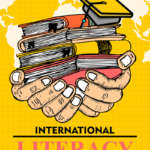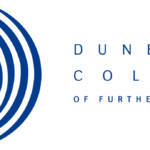What is it Art has always been a difficult thing to define to define, and it is probably an even more difficult thing to define in the twenty-first century. Everything from a 30, 000-year old cave painting to an unmade bed (see Turner-prize nominee Tracy Emin s My Bed) can be considered art, given the right context. However, art (or decorative/applied/fine art) is generally understood to refer to a deliberate and creative act of visual expression. This expression can come in a variety of forms, media, styles and genres. The forms that are most readily associated with art include painting (e. g. oil, watercolour and acrylic), sculpture, drawing (e. g. charcoal, pastel, pencil), printmaking and photography.
What does it involve With all that said, art is often misconceived as being an activity with a certain amount of pretentious association. Part-time Art classes for beginners set out to gradually disabuse participants of this notion by proving to them that art is for everyone and not only for the super wealthy or the super talented. Students on an introductory Art course will soon see that the activity can be both learned and enjoyed. Drawing and Watercolour classes will introduce participants to art techniques and will heighten their observational powers through still life sketching and drawing. They will also learn about the basics of composition and colour. Another important aspect of such programmes is that they encourage students to develop their own personal style and will often allow them to choose their own subject matter. This is also true of Art classes specialising in a particular area, such as painting, life drawing or mixed media. Such classes generally aim to develop the student s creative and technical skills through life drawing, clay modelling, lino printing and mixed media. Models will often be employed for practical life drawing classes. Students may also be invited to attend organised gallery visits as part of the development of their visual culture appreciation. Those with serious artistic aspirations may also consider enrolling on a part-time BA in Visual Arts Practice. Degree-level courses typically run for up to four years and allow students to critically engage with and produce nuanced, sophisticated artistic output in a variety of forms (video, sound installation, printmaking, painting, performance, etc. ). Among the modules that students can expect to encounter are Visual Research Methods, Digital Imaging and Principles of Animation. They will also be given the chance to attend workshops, learn from visiting lecturers and take part in art exhibitions, work placements, and student exchanges. Of course candidates hoping to get on to such a programme must meet certain criteria. One thing that all potential art students will need to possess is a thoughtful, polished portfolio. Courses in Portfolio Preparation allow students to achieve the necessary standard by offering them direction in constructing projects from concept to completion, using research notebooks, processing images and developing their ideas through 2D, 3D and colour. Portfolio Preparation classes will enable students to create relevant, personal and comprehensive portfolios of work. For those whose passion for art is so strong that they wish to share it, there are also courses in Creative Arts for Early Childhood. These will equip learners with the knowledge and skills they need to facilitate a child s learning, development and well-being through creative activity. Students on such courses will be trained in devising activities, interactions and materials using media, art, craft, drama and music. Why do it At a time of technological flux and economic turmoil, the role of the artist is as important as it ever was, maybe even more so. Visual artists look critically at the changing world. By continually challenging ideas and practices they provide new ways of seeing as well as of responding. This is critical to encourage debate and change in contemporary society. Indeed, learning to read and understand visual culture is essential for anyone hoping to work within the creative sector whether in a traditional role or in a modern digital variant. Yet art is not only means of social commentary. It also offers all practitioners a space for reflection. In fact its benevolent psychological effects have been well documented, and art programmes have been successfully implemented and availed of in prisons and care centres for decades. What comes next Graduates and dedicated enthusiasts may find work in the creative industries as artists, art teachers, arts administrators, art directors, community arts coordinators, art critics, arts officers, content developers, image researchers, film-makers, art historians, curators and far more besides. For those who treat their art as an enjoyable pastime, part-time Art classes will offer them a chance to improve their technique, meet like-minded people, and find an means of self-expression. At a glance Part-time Art classes give students a chance to hone and improve their skills and techniques, as well as provide them with an outlet for self-expression. Most introductory Art courses run for around 2 to 4 months and can cost from 115 to 320. Degree-level Art programmes can run for up to four years, though the hours can be flexible.



















